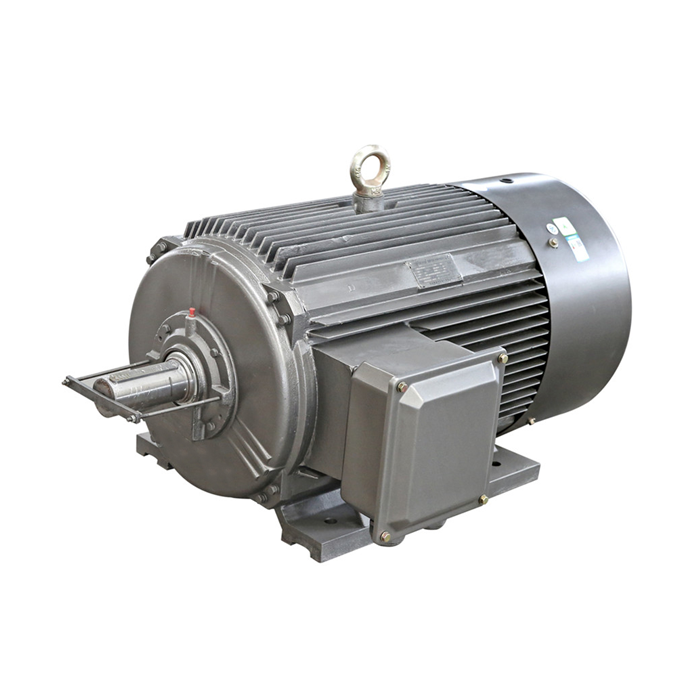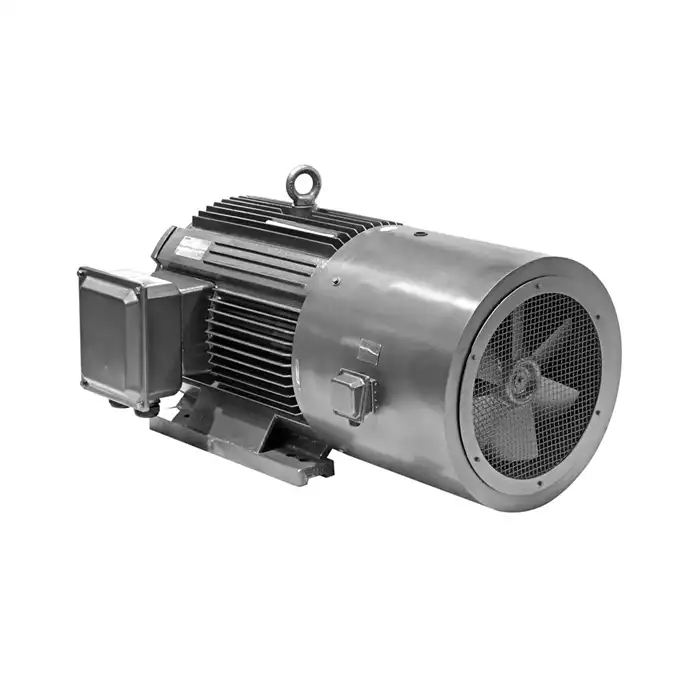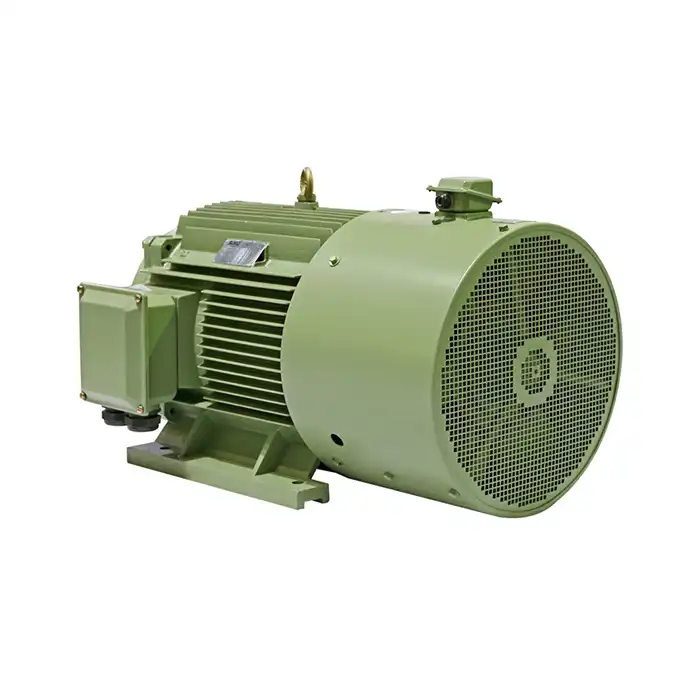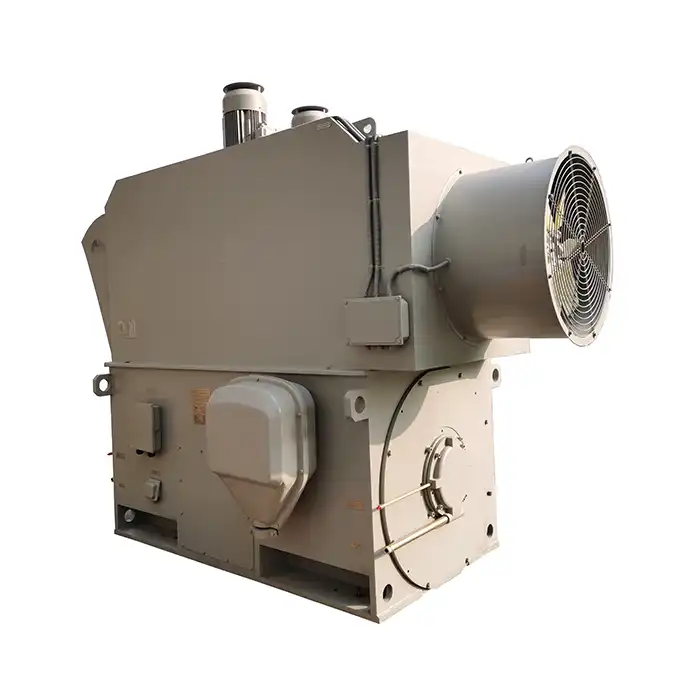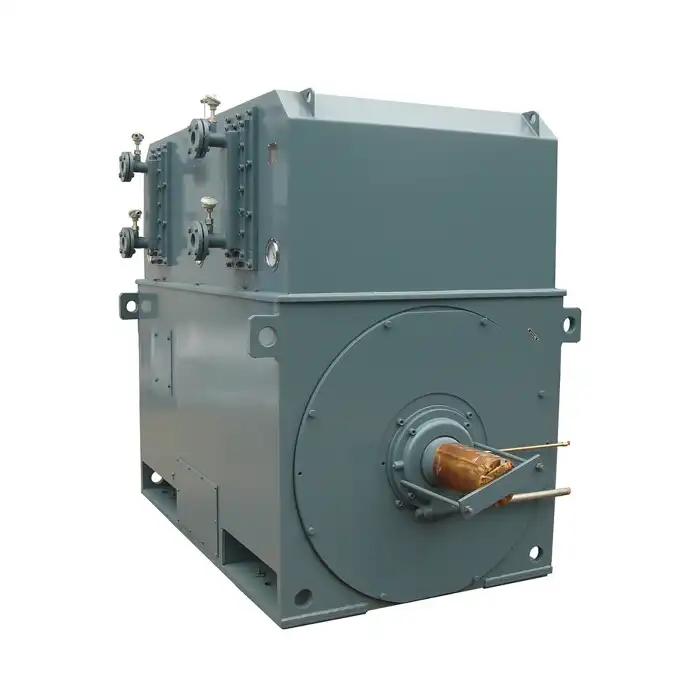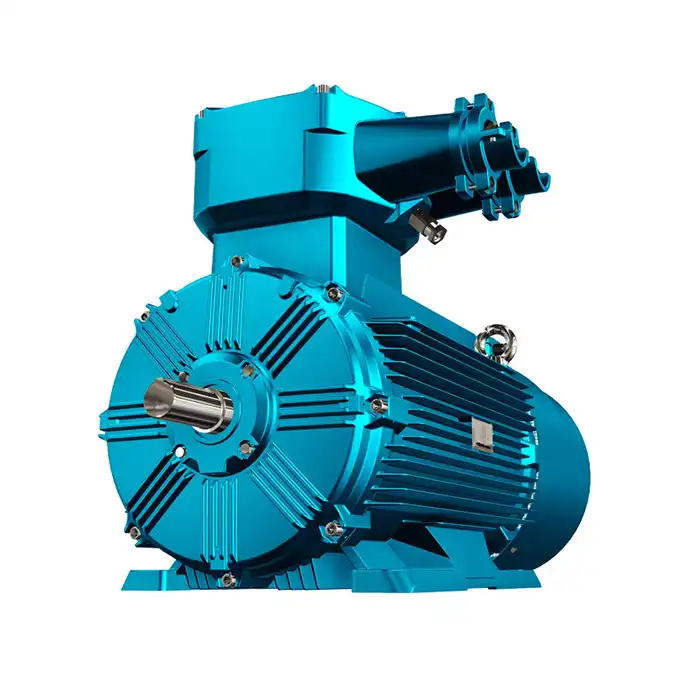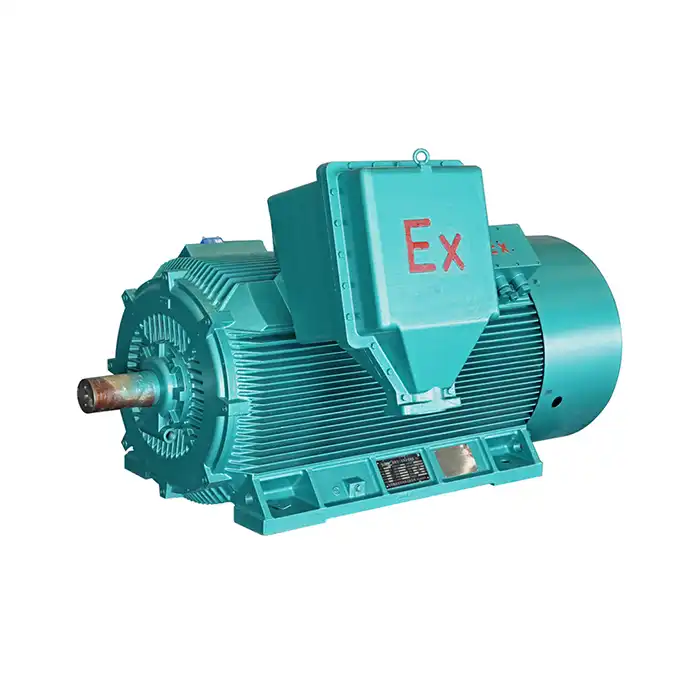The OEM production process for slip ring rotor motors is a complex mix of technical accuracy and industrial know-how. These specialist induction motors use slip rings to send current to the rotor windings. This gives them great starting torque and lets them modulate their speed in a wide range of applications. Modern production methods make sure that every slip ring rotor motor satisfies strict quality requirements and works reliably in tough industrial settings. When engineers and procurement experts choose motors for important jobs in manufacturing, energy, and automation, they may make better choices if they know how this manufacturing process works.

Series:YRQ
Voltage range:380V±5%
Power range:45-800kW
Protection level:IP23
Application:YRQ(JR) series medium-sized motors can drive a variety of different machinery, such as fans, compressors, water pumps, crushers, ball mills, cutting machine tools, transportation machinery and other equipment, and can be used in coal mines, machinery industries, power plants and various industrial and mining enterprises. Used as prime mover.
Advantage: The JR series medium-sized motors have very powerful driving capabilities and can not only drive conventional mechanical equipment, but also some complex mechanical equipment. For example, it can drive heavy machinery such as ships, cranes, and wind turbines, as well as small household appliances, purifiers, compressors, etc.
Others: SKF, NSK, FAG bearings can be replaced according to customer requirements.
What you need to know about slip ring rotor motors
What is a motor with a slip ring rotor?
Slip ring rotor motors are a specific kind of three-phase induction motor that stands out because of the way their rotors are built. These motors are different from regular squirrel cage designs because their rotor windings are linked to outside circuits using slip rings and carbon brushes. This setup lets you add variable resistance to the rotor circuit, which gives you great control over how the motor starts and how it works. The basic structure contains a wound rotor with three-phase windings that are coupled in a star pattern, slip rings that are attached to the rotor shaft, and stationary carbon brushes that maintain electrical contact. This design lets operators change the rotor resistance as the machine starts up, which lowers the inrush current and increases the beginning torque. These motors are especially useful for industries that need precise speed control and significant beginning torque, such mining, crane systems, and huge pumping stations. The YRQ(JR) series is a good example of contemporary wound rotor motor technology. It has power ranges from 45kW to 800kW with voltage ratings of 380V±5%. These motors may be used in a wide range of applications, including as fans, compressors, water pumps, crushers, ball mills, cutting machine tools, and transportation gear. They are the main movers in coal mines, power plants, and other industrial businesses.
How does a slip ring rotor motor work?
The basic idea behind how it works is electromagnetic induction with control over external resistance. When three-phase voltage powers the stator windings, the rotor windings get currents from spinning magnetic fields. The slip rings make it easy to connect to outside resistors, which lets you tune the resistance of the rotor circuit very precisely during various stages of operation. When the machine starts up, the maximum external resistance lowers the rotor current while keeping the torque output high. As the motor speeds up, operators slowly lower the external resistance to get the best performance for running circumstances. This method lets beginning currents be as low as 350–450% of the rated current and starting torques be as high as 280% of the rated torque. The advanced control system lets you change the speed by changing the rotor resistance, which makes these motors perfect for situations where you need to change the speed without using electronic drives. This mechanical way of controlling speed works well in tough situations where electronic controllers may not be reliable.
The benefits of slip ring rotor motors
Squirrel Cage Motor vs. Slip Ring Rotor Motor
Comparing performance shows that wound rotor motors have clear benefits in several situations. Squirrel cage motors are great for applications that need consistent speed, whereas slip ring motors are better at beginning and controlling speed. Starting torque performance is one of the most important differences. Wound rotor motors may reach 280% of their rated torque, whereas squirrel cage motors usually reach lower values. Another big benefit is starting current control. Wound rotor motors use external resistance management to keep inrush current to 350–450% of rated current. The ability to alter speed in different ways is a big difference between both sorts of motors. To change the speed of squirrel cage motors, you need variable frequency drives. To change the speed of wound rotor motors, you need to change the resistance of the rotor. This mechanical method is more reliable in tough situations and lets you smoothly change the speed across a broad range of speeds.
Efficiency and Upkeep
The energy efficiency of a system depends a lot on how it is used and how it is maintained. When slip ring rotor motors are properly maintained, they work quite well, especially when external resistance circuits are set up to work best with certain load circumstances. Taking care of the slip ring and carbon brush is the most important part of maintenance. Regular checks should keep an eye on the condition of the brushes, the slip ring surface, and the electrical connections. Quality bearings from companies like SKF, NSK, and FAG make things more reliable and cut down on the need for maintenance. XCMOTOR lets customers choose from a wide range of bearings, taking into account their needs for particular brands depending on how they will be used and how they will be maintained. Proactive maintenance plans greatly increase the life of motors while keeping them running at their best. Regular lubrication, heat monitoring, and vibration analysis may assist find problems before they affect productivity. The IP23 protection rating keeps the environment safe while yet allowing for maintenance as needed.
OEM Process for Making Things
Building Slip Ring Rotor Motors
Modern manufacturing uses innovative methods that make sure quality and performance are always the same. The first step in making the product is to stack the precision stator core lamination, and then carefully install the winding using high-quality copper conductors. Vacuum pressure impregnation (VPI) makes insulation stronger and better at holding heat. When putting together a rotor, you need to pay special attention to the quality of the winding and the installation of the slip ring. Precision winding procedures make sure the electrical properties are balanced, while mechanical balancing cuts down on vibration and makes bearings last longer. Quality control steps include thorough testing at every level of production to make sure that electrical specifications, mechanical tolerances, and performance characteristics are all correct. The production process includes strict testing procedures such no-load tests, locked-rotor tests, and checking for temperature increase. Each motor goes through a performance validation process to make sure it meets the required ratings and requirements. Advanced manufacturing methods provide the highest quality requirements while keeping production times competitive.
Custom Solutions for Slip Ring Rotor Motors
Customization options let you create solutions that match the needs of your unique industry. Engineering teams work with clients to make the best motor designs for their individual needs, taking into account things like ambient conditions, duty cycles, and performance criteria. Customized solutions include a wide variety of changes, such as unique enclosures for severe environments, changes to terminal layouts for certain installations, and performance improvement for specific load characteristics. The design of wound rotor motors is flexible enough to allow for these changes while still being efficient to manufacture. Successful OEM partnerships show how important it is to have personalized approaches. Mining applications need higher degrees of protection and unique cooling systems, whereas maritime applications need materials that won't rust and certificates. These partnerships lead to better solutions that work better and are more reliable.
Picking the Right Slip Ring Rotor Motor
Induction Motor vs. Slip Ring Rotor Motor
When comparing motor technologies, the selection criteria must take into account the needs of the application. All wound rotor motors are induction motors, however when people compare them, they usually mean wound rotor vs squirrel cage induction motors. Wound rotor motors are better for applications that need strong starting torque, controlled acceleration, or the ability to change speed. Wound rotor motors are useful for tasks that need large loads, frequent starters, or speed control. On the other hand, squirrel cage alternatives may be better for applications that need to start up quickly and run at a consistent pace. When it comes to money, you should think about the original cost, the cost of upkeep, and how well the system works. Wound rotor motors usually cost more to buy at first, but their better performance in tough situations generally makes up for the extra cost by increasing productivity and cutting down on downtime.
How to Choose the Best Slip Ring Rotor Motor Suppliers
To choose a slip ring rotor motor supplier, you need to look at their technical ability, quality processes, and support services in detail. Experience in production, quality certifications, and a history of success in comparable applications are all important factors to consider when making an evaluation. A technical examination should check the design capabilities, testing facilities, and quality control systems. Manufacturing plants should show that they can use innovative manufacturing methods, do a lot of testing, and have strong quality control systems. When working on complicated projects, it is quite helpful to have a supplier that knows how to make unique solutions and do application engineering. Long-term ownership costs are affected by customer support features including technical help, the availability of replacement parts, and service support. Suppliers who provide full support packages add value by making maintenance easier and more reliable.
XCMOTOR - Your Trusted Slip Ring Rotor Motor Partner
Shaanxi Qihe Xicheng Electromechanical Equipment Co., Ltd. (XCMOTOR) stands as a leading provider of power equipment solutions, specializing in high-efficiency, low-energy-consumption motors with stable power delivery. Our commitment extends beyond product supply to comprehensive technical support addressing pre-sales consultation, after-sales service, and ongoing technical assistance. Our distinctive advantages include exclusive use of trusted brand components, ensuring reliability and performance consistency. Fast delivery capabilities support urgent project requirements while our 30-day return policy demonstrates confidence in product quality. Dedicated support services operate throughout the week, including weekends, providing unmatched customer service accessibility. The YRQ(JR) series demonstrates our engineering capabilities, featuring powerful driving capacity suitable for conventional and complex mechanical equipment. These motors successfully power heavy machinery including ships, cranes, and wind turbines, while also serving smaller applications such as household appliances and compressors. This versatility reflects our design expertise and manufacturing quality.Frequently Asked Questions
Q1: What are the main differences between slip ring rotor motors and synchronous motors?
A: Slip ring rotor motors operate as induction motors with variable speed capabilities through rotor resistance control, while synchronous motors run at constant speed synchronized with supply frequency. Wound rotor motors provide superior starting torque and speed control flexibility, making them ideal for applications requiring variable speed operation without electronic drives.
Q2: How can I improve the efficiency of my slip ring rotor motor?
A: Efficiency optimization involves proper maintenance practices, quality bearing selection, and optimized rotor resistance settings. Regular inspection of slip rings and brushes, appropriate lubrication schedules, and thermal monitoring contribute to sustained efficiency. Using quality bearings from trusted manufacturers like SKF, NSK, or FAG enhances performance and reduces energy losses.
Q3: What is the typical lead time for a slip ring rotor motor?
A: Standard lead times range from 4-6 weeks depending on specifications and quantity requirements. Custom configurations may require additional time for engineering and manufacturing. XCMOTOR's efficient production processes and inventory management minimize delivery times while maintaining quality standards.



